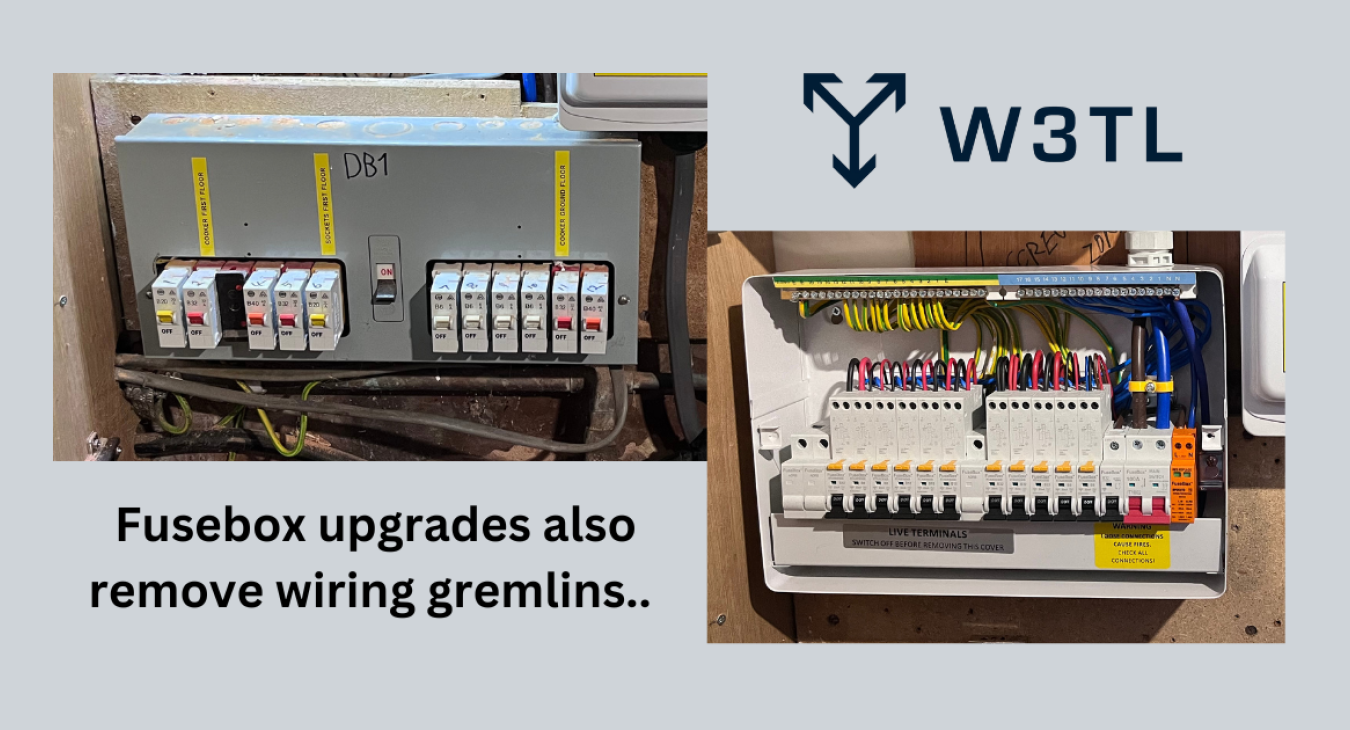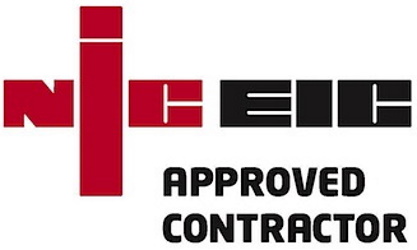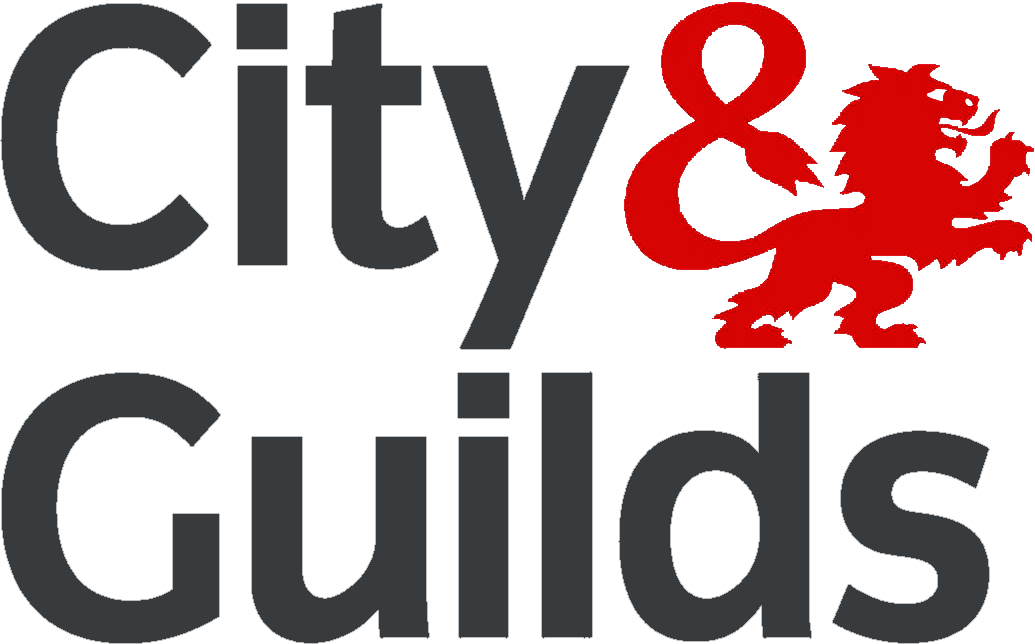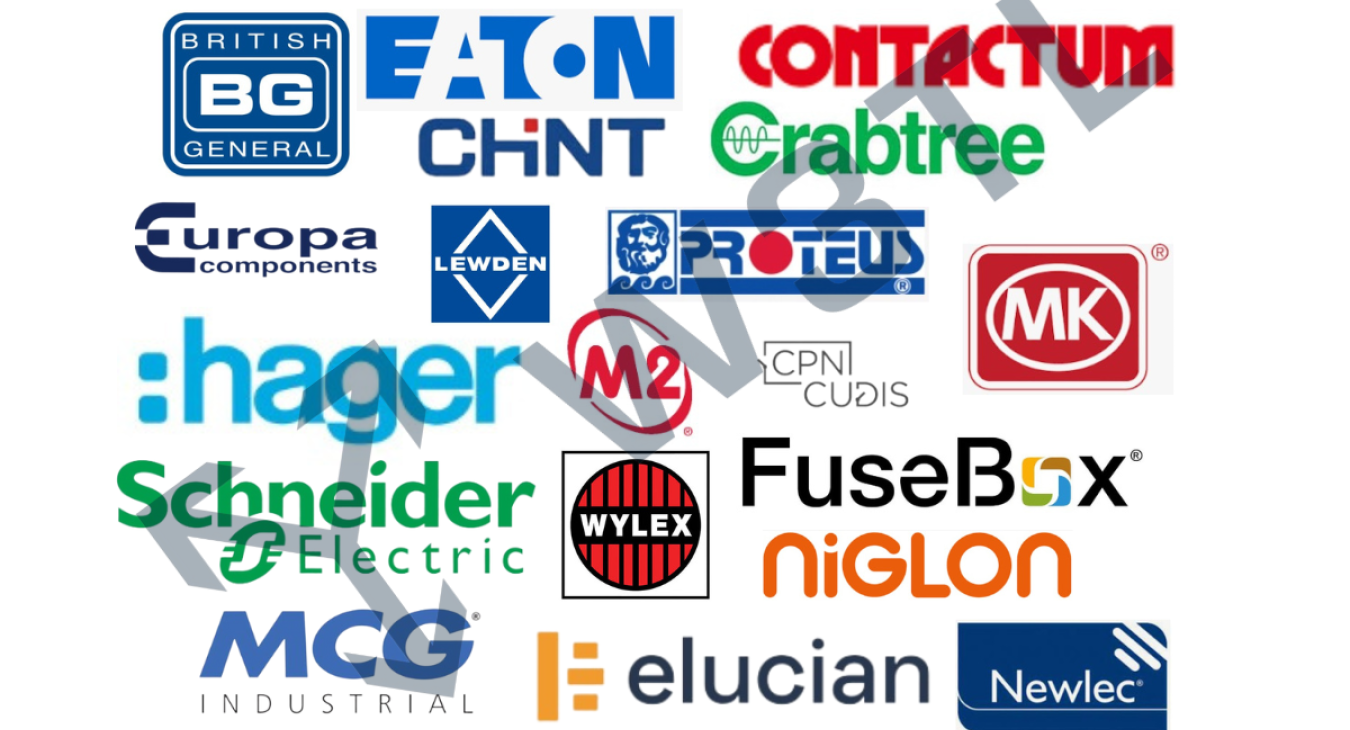
Is there a correct consumer unit?
By now, you probably know there are quite a few makers of consumer units to choose from and that there are a variety of different benefits at varying price points.
A consumer unit is a monitoring station which turns off the electrical supply when a fault is detected. Consumer units will not vary in their operation, as all consumer units must be fit for purpose and conform with regulations around their manufacture and operation.
That said, there are differences between the large number of offerings available. Typically, these offerings fall into one of three price points, and its these three price points that I’ll look at comparing.
With thousands of Electrical installers being tasked with picking a brand of consumer unit for your home, I look at whether the cost is the biggest thing that matters in a tick box exercise for circuit protection.
Low cost providers
Chint, Axiom, CED, Contactum, Lewden, Fusebox, MCG Industrial, Proteus, M2, CPN Cudis, Elucian, Newlec, British general, MK, NiGlon, Europa,
Mid range manufacturers
Crabtree, Schneider, Wylex, Hager
Premium
Eaton
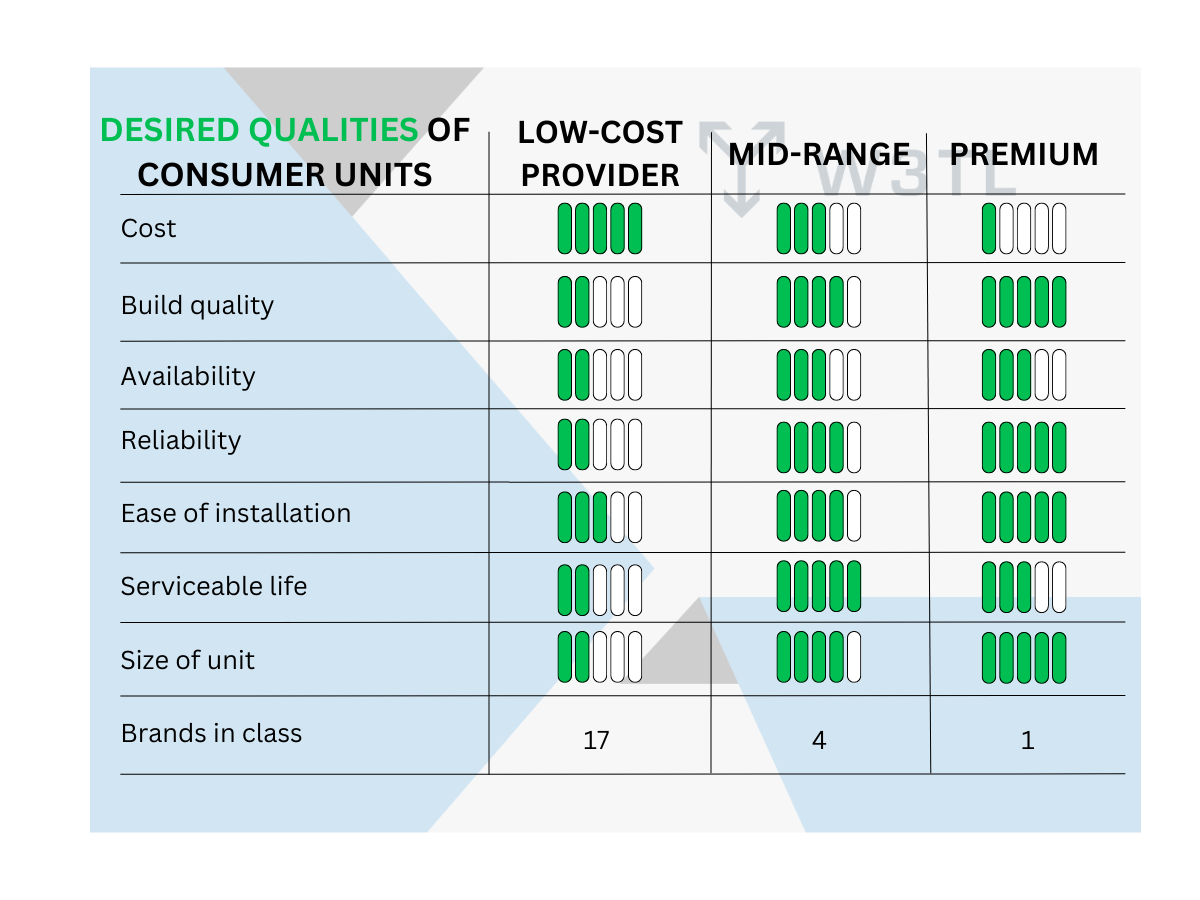
Let’s look at this chart for a moment. As you can see, low-cost providers offer all the protection at the lowest price, but there are hidden costs over the life of the unit that we will explore in this article.
Mid-range boards offer a significant bump across the board over the low-cost providers of consumer units. But there are some disadvantages too.
Mid-range and premium supplier advantages
Build quality.
Why is the build quality so much better? There are a few reasons:
Consumer units are rectangular and shaped out of a sheet of metal. The material, the coating, the thickness, and the means of joining the seams are all superior in the mid to high range. All units are fitted with a lid that is removed during installation.
These various differences may be marginal in some cases, but these difference mean some units have poor rigidity so they can bend or warp. Some coatings can peel or chip off exposing the steel to corrosion. Some lids do not align perfectly with the unit for numerous reasons, because of this installers can have problems like cross threaded fixing screws, damage to the switches in the unit and the lid can come away or holding clips removed and lost.
Mid-range and premium offerings are more substantial, have stronger joins in the corners and so they keep their shape better.
There are internal parts made of plastic in all consumer units. Plastic is an insulator and thus, is used to keep metal parts apart from each other. If these parts break, there are no spares unless you buy another unit with them in. Low-cost providers typically have smaller plastic parts which are prone to snapping during installation or testing. Mid-range and premium consumer units use different setups with stronger plastics to ensure the unit can hold the array of cabling connected inside it.
Reliability
There are two types of failure: out of the box failures and working life failures.
Out of the box failures have occurred with a large number of units from low-cost providers. These faults include:
- seized terminal screws
- stripped threads on the terminal screws
- failures to operate when tested.
No instances of such failures or issues with the quality have been encountered with mid-range and premium products.
Working life failures generally include
- RCD test button and simulated test failures
- overheating of terminals
- failure to reset following a fault
These faults are all encountered with many of the manufactures in the low-cost providers.
With the mid-range and premium offerings, working life is generally ten years or more. Switchgear from these manufactures have passed testing thirty years after they were installed.
Ease of installation
Some consumer units are easier to fit than others. How easy a unit is to fit has less to do with its cost and more to do with its design. Whilst there are a few well designed budget units, there are very few poor designed mid-range and premium units.
With the other factors around availability and build quality affecting whether a consumer unit is easy to fit or not, it is difficult to find a unit that is easy to fit without there being other more important factors to consider.
The easiest boards to fit generally have:
- a strong box which doesn’t warp or bend easily
- sturdy supports for the switch rails
- circular knockouts: square knockouts can fall out when they are cut through leaving you with problems if you are using glands or bringing in conduit.
Serviceable life
By serviceable life, I mean how long will you be able to keep the unit until its time to rip it out and change it for something else.
The consideration here is how easy will it be to get the parts in the future.
Low-cost providers are often the most sensitive to the changes in wiring standards or regulations, this is because they generally don’t develop the technology, rather, they either reverse engineer the products from the mid-range, or they rely on bigger manufacturers to produce their product.
Either way, as regulations change and standards are increased, it puts enormous pressure on suppliers to release new technology and upgrade their manufacturing. Another factor that has grown in popularity is to have the consumer unit on display; this has meant manufacturers are redesigning their units with beauty and form in mind, thus, further adding to the cost of production.
For a budget low-cost provider, this can mean that the competition is too great, and as such, these units and their parts become obsolete and ultimately unserviceable in a short space of time.
With the mid-range providers mentioned, they have been around for decades. There must be hundreds of thousands, if not millions of their switches and devices out there, making these units very serviceable and very easy to source parts and spares.
Size of unit
The size of a consumer unit will be determined by the number of circuits it feeds. It is possible to house other types of switches and equipment in a consumer unit like transformers, timers, and contactors etc on the DIN-rail.
You may have a doorbell transformer, an electrical heating timeclock, or a contactor for a large appliance in your consumer unit and not know its there.
There are two types of consumer units: single phase (SPN) and three phase (TPN). These units are completely different in their build and whilst the switchgear is interchangeable, additional DIN-rail equipment can only be housed in a single-phase board unless the consumer unit is a customer built unit.
Side note* You may wonder why this is noteworthy: If this equipment isn’t in the consumer unit, it will be installed somewhere else. If there is not much physical space in the cupboard where your consumer unit is found, the only mechanical way of housing this equipment would be to bring it into a unit that is capable of housing this stuff in an efficient way.
Therefore, if there is a mix of devices in a unit, you may find you need a unit with a large number of ways. The biggest single phase board offerings are mostly from mid-range makers; there are 1 or two exceptions.
A work around is to simply install two units on top of each other. Whilst this is doable, the installation time, the volume of cables travelling back and forward, and the complex mess that is often the reality can dimmish the savings you make when compared with the more expensive, better built mid-range units.
Mid-range disadvantages
Cost
With all additional benefits that mid-range and premium products offer comes an obvious bump in cost.
These costs are due to a mixture of things like
- Research and Development
- Superior material
- Geographical manufacturing.
Research and development can be very expensive, which is why manufactures like Siemens, Hager, and Schneider are often the first to market with new technology.
Once the technology is reversed engineered by other manufacturers, this expensive new to market tech is quickly outpriced by the other makers that do not have a big R+D bill that needs covering by sales of that technology.
Mid-range manufacturing is generally conducted in the West. This means they must conform to the requirements of operating a manufacturing facility in the West. Low-cost providers outsource their manufacturing to Asia where the workforce costs less and facilities are under less scrutiny.
Availability
Historically, you could have gone into any retailer in England and they would have had MK on the shelf. Now though, there doesn’t seem to be an industry go-to, although there are some contenders.
Different retailers distribute different brands. Even the same retailer with multiple branches don’t always stock the same brand as these wholesalers are franchises and separate retailers in their own right.
Many suppliers will have at least two brands in stock. Stocking more adds instability, as more stock often means less of one type of stock in favour of accommodating a third brand on the shelves. This can mean you may only be able to fulfil a percentage of an order.
Sourcing a consumer unit on the day is more likely to depend on whatever the retailer has available. With a day or twos notice, you can order anything and have it delivered. However, ordering it once may mean you need to place another order if something is missed or incorrect: this happens more than you would think.
The human element
To compare consumer units as a product to help consumers make an informed choice can be tricky as much of the differences are marginal and often subjective.
Whilst there are benefits to choosing a more long standing and reputable manufacturer, any product, irrespective of its costs will only be as good as the wiring it is connected to, and the execution of its installation.
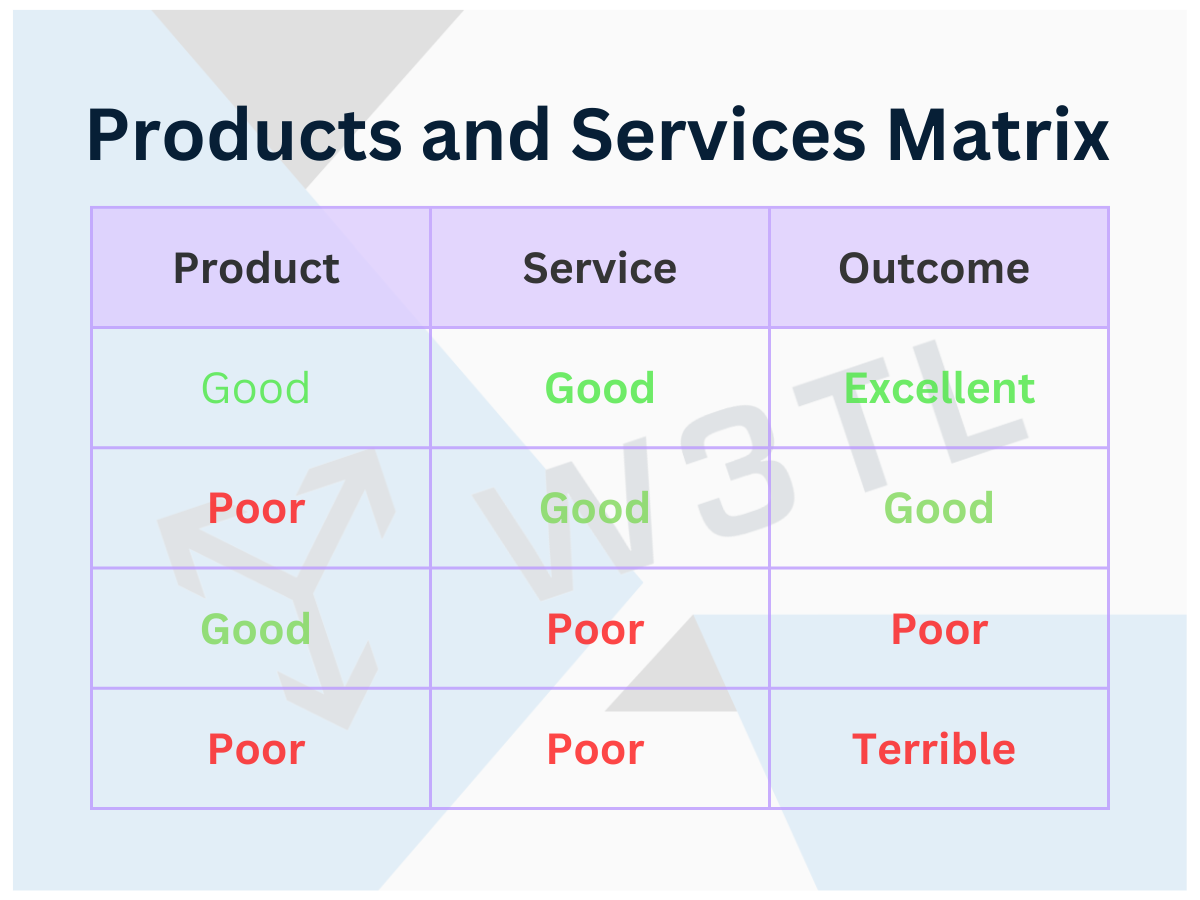
In this graphic, I try to explain that good products are no guarantee of a good outcome on their own. Good products installed well are excellent. If you are shopping on a budget, a good installer can still ensure you get a good outcome even if you need to choose from a low-cost provider of circuit protection. Poor installers will always produce poor work if there is no intervention, so I would always advise you give more consideration to the person installing this equipment for you, and then, with their help, identify a consumer unit that suits your needs and is in-line with what the installer is happy to fit.

